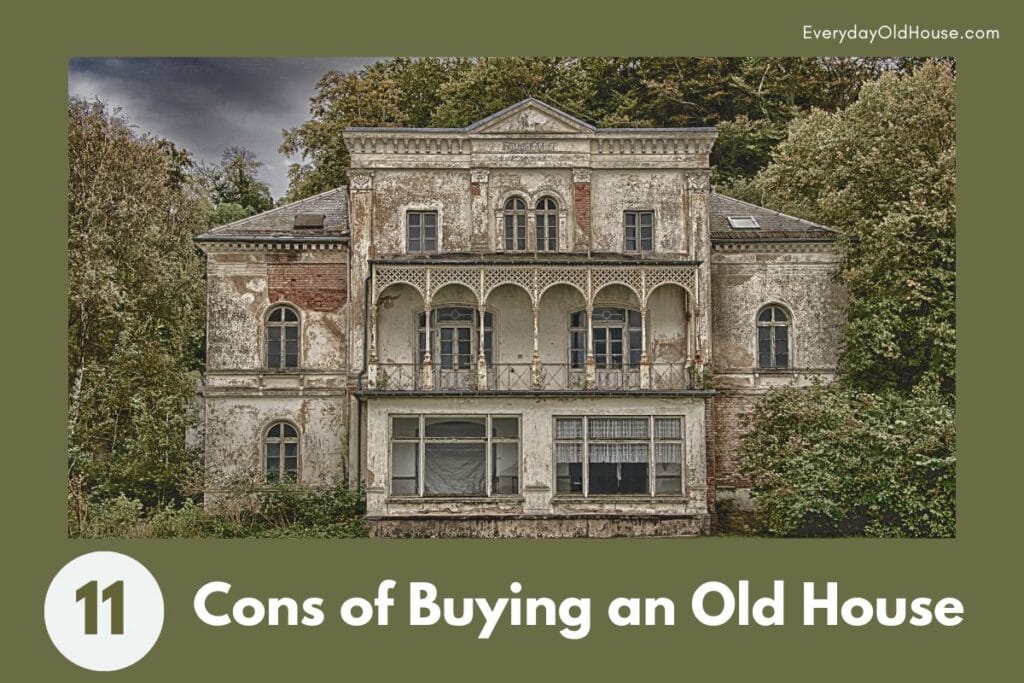Last Updated on April 2, 2024
Lack of storage space is a common and significant problem for homeowners with old houses. I speak from experience – the struggle is real! Below find out the simple reason why old houses have tiny closets with a quick, but interesting stroll through history (I promise – it’s painless!).
[Come back soon for 10+ Practical Ways to Handle Small Closets in Old Houses.]
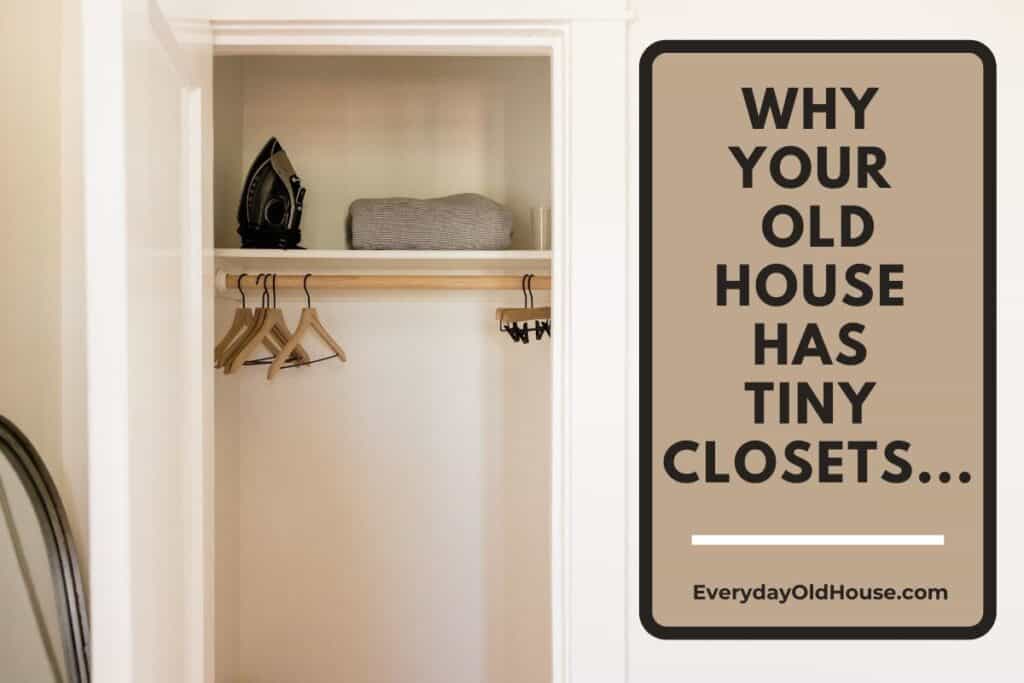
Backstory
Closets keep us organized and sane. They store all our stuff, and if we’re being honest, hide our messes. (Okay, well at least mine). Luckily there are a variety of closet organization ideas and tools out there to help contain our chaos.
When we think of closets, we usually think specifically of bedroom closet to store our clothes and shoes. But there are also coat closets, broom closets, linen closets, etc. And they come in various sizes, from itty-bitty (have you met my linen closet?) to the massive walk-in closet.
So why do old houses suffer from the challenge of lack of closets and/or closet space? My lack of closet space annoyed me enough to dig into history websites and books like “If Walls Could Talk” to find out why I’m battling for storage space in my old house.
Why Do Old Houses Have Tiny Closets?
There is a very simple explanation why old houses have tiny closets. When older houses were originally built, people just didn’t own as much stuff. The average person didn’t have 10 sweaters in different colors, jeans for during the week and jeans for the weekend, etc…
There was no abundance of clothes or shoes.
So there was little need for a closet, much less a large closet.
When Did They Start Putting Closets in Houses?
In a nutshell, the “original” closets were built during the Middle Ages. But their main function was not to store garments. Instead, these small enclosures were meant to provide homeowners some “alone” time. Closets were small rooms built adjacent to bedrooms for the wealthy to study, pray, and rest. The closets as we know them now didn’t evolve until the 1800s.
Here’s a few more details on how closets came about that you’d probably be interested in….
Closets: A Quick History
You may think that people needing increased storage would directly lead to the invention of the closet. Nope. The invention of the closet came about in a roundabout way. In fact, the main purpose of the first closets wasn’t to store a homeowner’s stuff, but to hide the homeowner.
Intriguing, eh? Read on.
Ancient Times
While people in the past didn’t own a lot of stuff, they still had some items that needed storing. The average Ancient Egyptian stored items in baskets made of reeds, while the wealthy utilized alabaster chests. The Roman army invented an “armorium” (Latin for the future word “armoire”, which we will see later on) which was a wooden box to store and transport weapons and armor, especially on long journeys between camps.
Middle Ages
Fast forward to the Middle Ages. Most people lived in just one room where they conducted all their day-to-day activities. They slept on the floor in the same room where they cooked, ate, worked, etc. There was no need for a closet.
Only the wealthy were privileged enough to have a separate bedroom. However, bedrooms weren’t as private as today. Bedrooms during the Middle Ages were utilized for more than just sleeping. They were used for a variety of purposes – working, entertaining – with people coming and going. Not a very intimate place.
So for a bit more private time, many wealthy homeowners built a small private room adjacent to the bedroom. The purpose of this withdrawing room (which was more the size of today’s walk-in closet) was for reading (literacy was spreading), prayer, playing music, dressing, even bathing. These rooms also stored treasured possessions, like books, maps, art, musical instruments, but rarely garments.
In other words, get some much-needed “alone” time.
So…Where Were Clothes Stored?
Instead of closets, it was more common to store clothes in freestanding pieces of furniture. Garments were folded and placed in chests, dressers, armoires (I told you this word would pop back up!), wardrobes, etc. Some of these were very elaborate with shelves, drawers and hooks to hold garments.
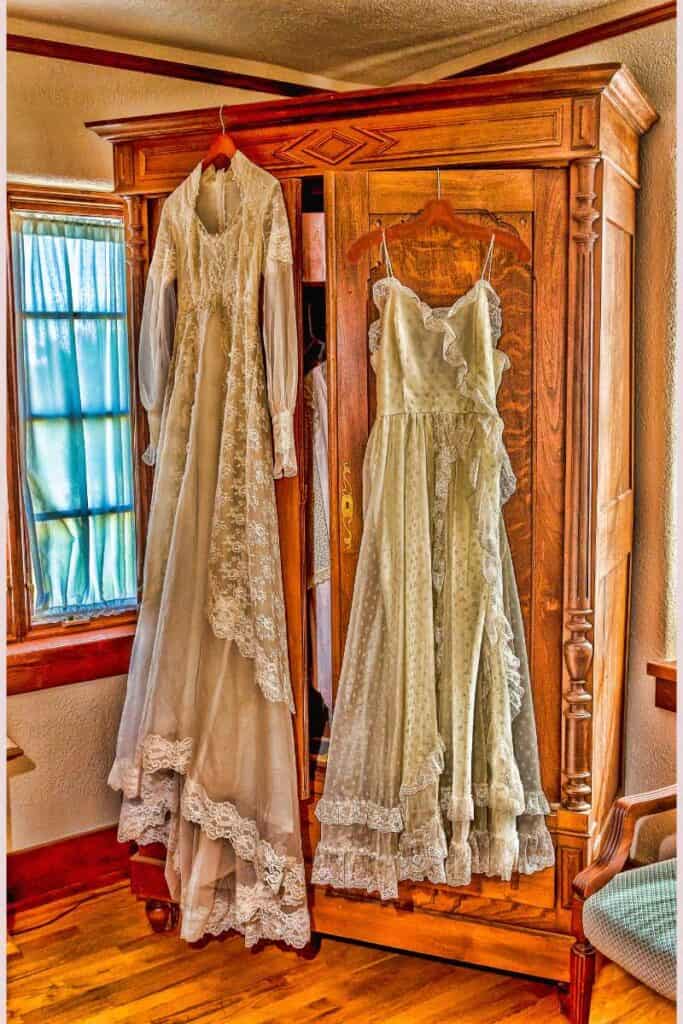
Colonial America
Over time closets went in two different directions. In Europe, closets grew into large dressing rooms. However, in Colonial America we start to see more closets more commonplace in the floor plans of both modest and grand homes.
These colonial closets were usually built on either side of a fireplace in bedrooms and dining rooms. But they were used for general storage purposes, not for clothing.
Clothes were still folded and kept in freestanding furniture or hung on pegs, nails or hooks.
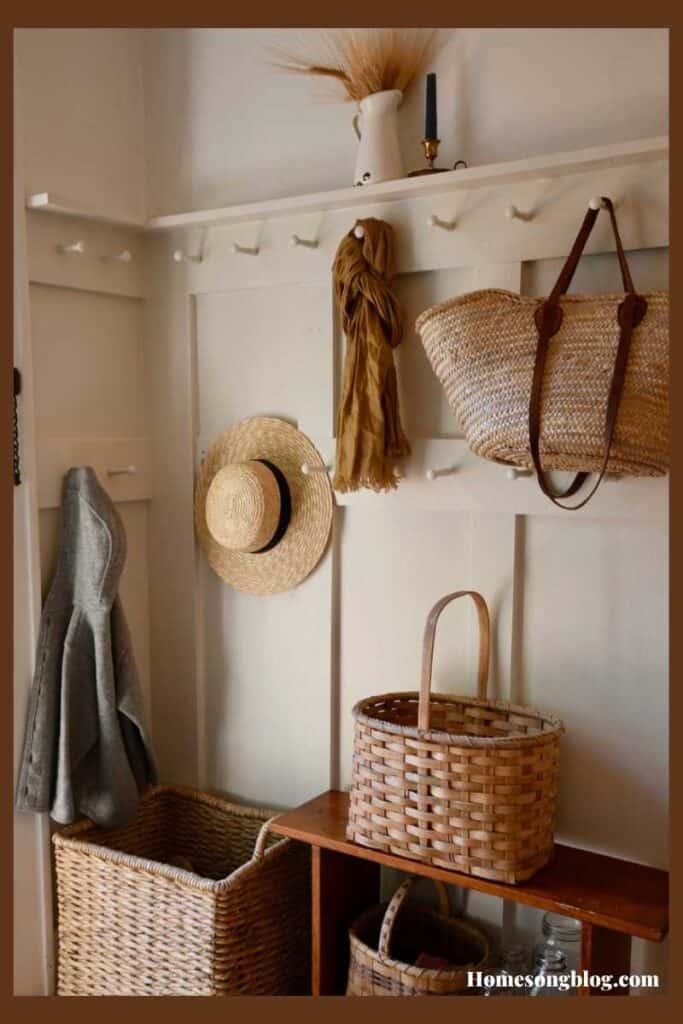
[Sidenote: There is a popular myth that there was a lack of closets in Colonial America due to increased tax by the British. As detailed here, that is not the case.]
Industrialism
In the 1800s with the rise of industrialism there was an increased opportunity for the average person to buy more consumer goods, as evidenced by dining room built-ins to hold china and extra dishes.
But clothes were still mainly kept in free standing furniture like wardrobes. And if they were in a closet, the clothes were still folded on shelves or hung on pegs. Why?
Because the clothes hangar wasn’t invented until 1869… (there’s some debate on who actually did the inventing…)
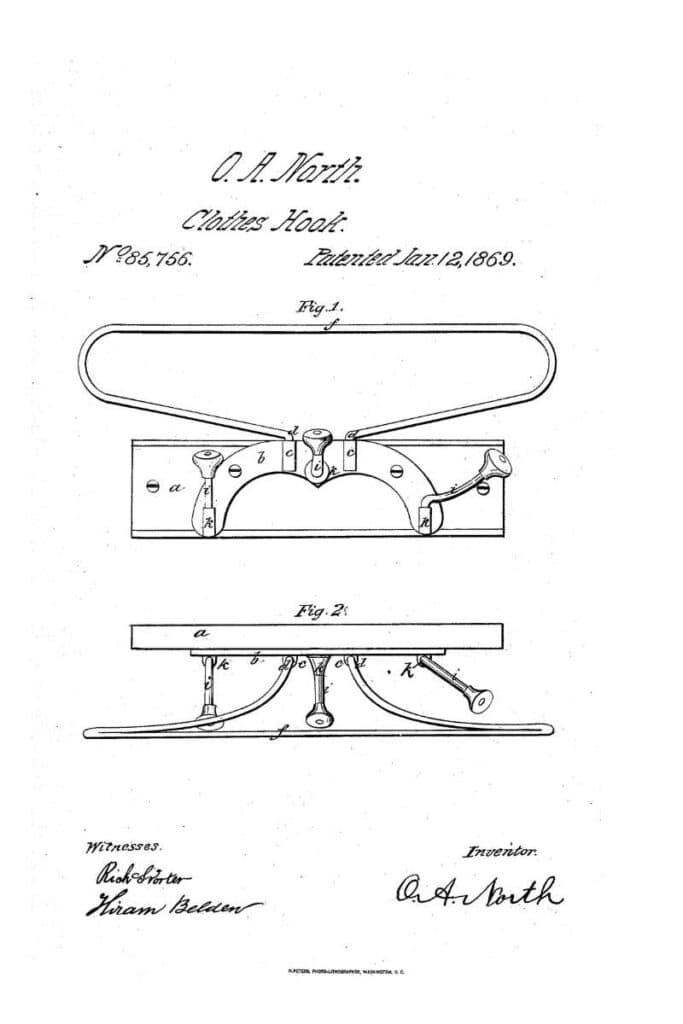
And hangars were an instant hit! With hangars, not only did closets became standard in bedrooms, but developed into the preferred place to store clothes!
Yippee! But unfortunately these old houses have tiny closets since people still didn’t have as many garments as we do today. Even our grandparents (who aren’t THAT old) didn’t have as many clothes as they do now.
Post WWII
Closets stayed relatively small until after World War II. Following the war there was a huge economic boom. People were buying cars, moving to the suburbs to new larger houses, and filling those houses with more stuff like new electronics, appliances, and clothes.
Which of course needed to be stored in larger closets. Closets, including the modern walk-in closet, that architects would fold into the blueprints for new homes.
Related Posts
Want to be the first to know about new posts? Be sure to follow me on Pinterest, Facebook, Instagram or Twitter of even Etsy! Or better yet… Subscribe below!
My monthly (admittedly sometimes more, sometimes less….) emails are like receiving a unexpected letter from an old friend WITHOUT needing to put on your slippers and walk out to your mailbox…. See? I got ya, my friend!)
[Note: My posts are proudly connected to these amazing link parties full of DIY ideas and inspiration!]


